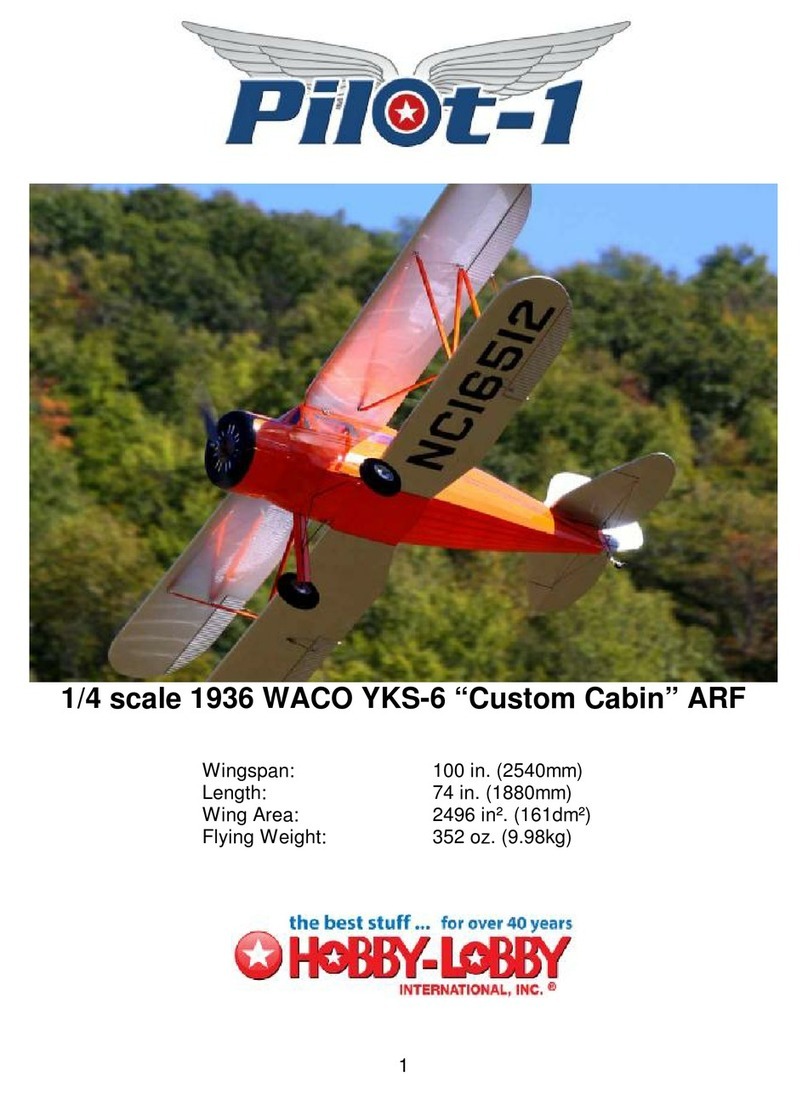
3
Introduction & History
The full-scale Aeronca Champion, or “Champ,” was manufactured by the Aeronca
Aircraft Corporation, in Middletown, Ohio between 1944 and 1951. Over 10,000 were
built. In 1946, it was marketed as “the newest in aerodynamic design! . . . It’s the easiest
plane you’ve ever flown. ”Like the Piper Cub with which it competed, the Champ also
featured tandem seating. While the Piper Cub is soloed from the rear seat, the Champ
can be soloed from the front seat, giving improved forward visibility on the ground, and
during takeoffs, climbs, landings. Although the Aeronca Champ has a wider cabin than
the Piper Cub, the Champ’s cruise speed was about 15mph faster. Its Continental 65hp
engine powered it to a top speed of 100 mph.
Pilot-1 is pleased to announce the 1/4 scale Aeronca Champ as part of the Golden Age
Civilian Series. The Pilot-1 “Champ” encompasses the same attributes in quality
construction and handling that made the original Aeronca Champ a favorite for over 50
years. Our engineers have spent countless hours developing a true-to-scale ARF that
looks and flies like the full-scale Champ. We know you will be pleased with its scale
looks and balanced maneuverability. In fact, our local model airplane pilots formed a
line so they each could get a chance to fly the prototype. All agree, for scale aircraft, it
may very well be the “easiest plane you’ve ever flown!”
Hobby Lobby International, Inc.
5614 Franklin Pike Circle
Brentwood, TN 37027
1-866-WE-FLY-RC
(1-866-933-5972)
www.hobby-lobby.com




























